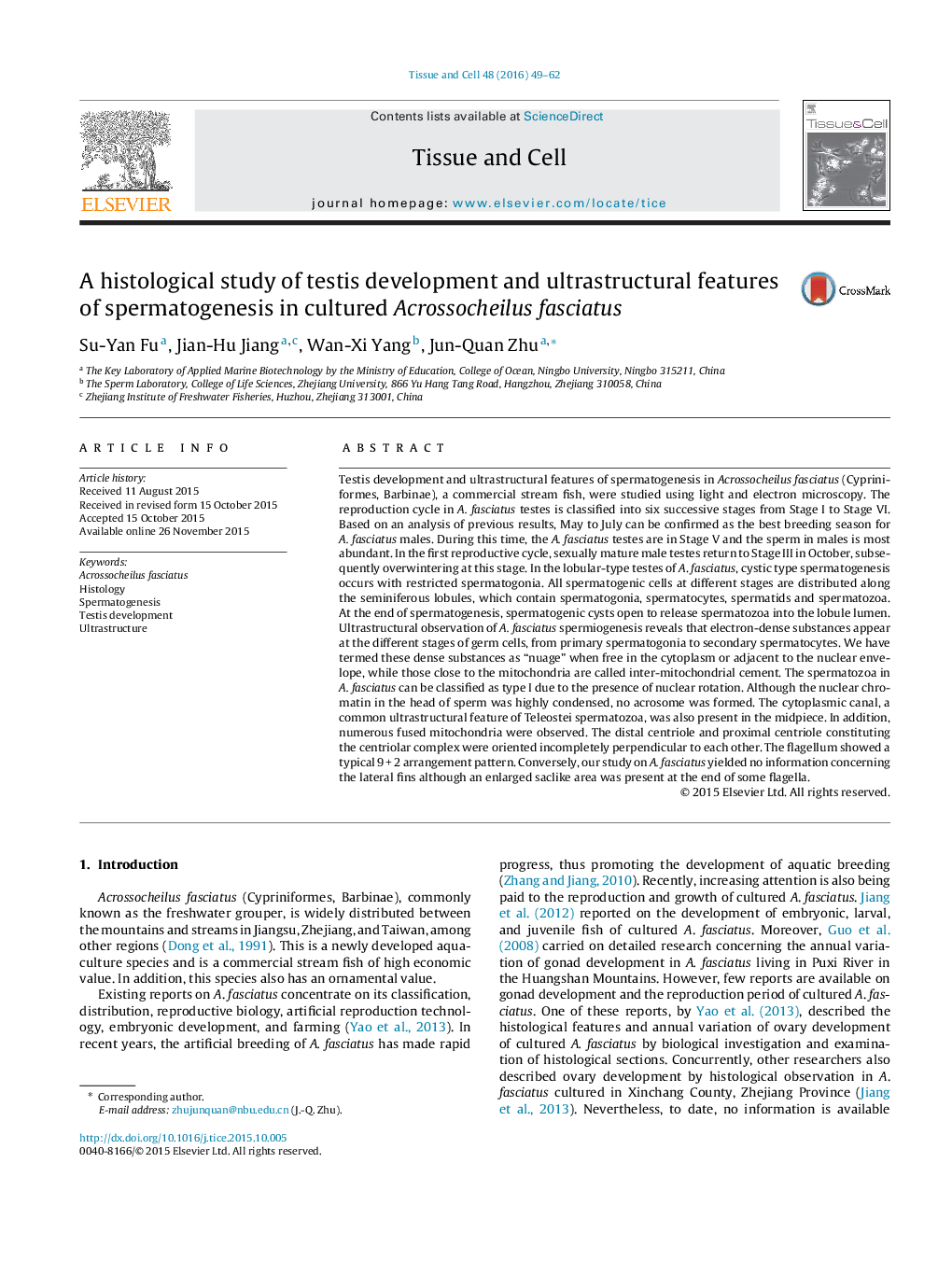| کد مقاله | کد نشریه | سال انتشار | مقاله انگلیسی | نسخه تمام متن |
|---|---|---|---|---|
| 2203540 | 1100505 | 2016 | 14 صفحه PDF | دانلود رایگان |

• May to July can be confirmed as the best breeding season for A. fasciatus.
• The reproduction cycle is classified into six successive stages from Stages I to VI.
• In the lobular-type testes of A. fasciatus, spermatogenesis occurs in cysts.
• Mature spermatozoa comprise the head, midpiece and a tail but have no acrosome.
• The spermatozoa can be classified as type I due to the presence of nuclear rotation.
Testis development and ultrastructural features of spermatogenesis in Acrossocheilus fasciatus (Cypriniformes, Barbinae), a commercial stream fish, were studied using light and electron microscopy. The reproduction cycle in A. fasciatus testes is classified into six successive stages from Stage I to Stage VI. Based on an analysis of previous results, May to July can be confirmed as the best breeding season for A. fasciatus males. During this time, the A. fasciatus testes are in Stage V and the sperm in males is most abundant. In the first reproductive cycle, sexually mature male testes return to Stage III in October, subsequently overwintering at this stage. In the lobular-type testes of A. fasciatus, cystic type spermatogenesis occurs with restricted spermatogonia. All spermatogenic cells at different stages are distributed along the seminiferous lobules, which contain spermatogonia, spermatocytes, spermatids and spermatozoa. At the end of spermatogenesis, spermatogenic cysts open to release spermatozoa into the lobule lumen. Ultrastructural observation of A. fasciatus spermiogenesis reveals that electron-dense substances appear at the different stages of germ cells, from primary spermatogonia to secondary spermatocytes. We have termed these dense substances as “nuage” when free in the cytoplasm or adjacent to the nuclear envelope, while those close to the mitochondria are called inter-mitochondrial cement. The spermatozoa in A. fasciatus can be classified as type I due to the presence of nuclear rotation. Although the nuclear chromatin in the head of sperm was highly condensed, no acrosome was formed. The cytoplasmic canal, a common ultrastructural feature of Teleostei spermatozoa, was also present in the midpiece. In addition, numerous fused mitochondria were observed. The distal centriole and proximal centriole constituting the centriolar complex were oriented incompletely perpendicular to each other. The flagellum showed a typical 9 + 2 arrangement pattern. Conversely, our study on A. fasciatus yielded no information concerning the lateral fins although an enlarged saclike area was present at the end of some flagella.
Figure optionsDownload high-quality image (175 K)Download as PowerPoint slide
Journal: Tissue and Cell - Volume 48, Issue 1, February 2016, Pages 49–62